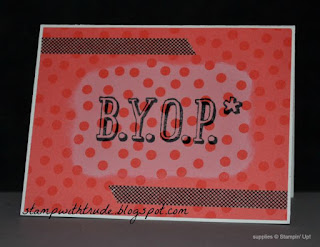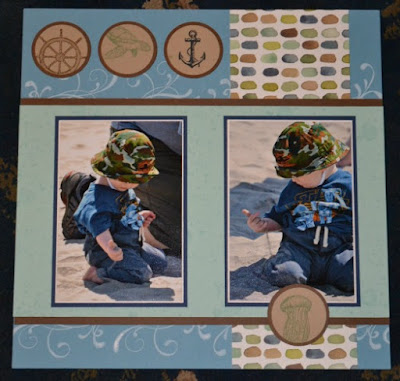Okay, you know this is all about the basics...
Today's subject is paper. There are so many types of paper that I could talk about paper for many blogs. But I am just going to mention a few of the many types out there because I don't want this to be overwhelming.
I'll start with the ones that you can purchase from Stampin' Up! at my online store.
Background papers:
Stampin' Up! calls theirs Designer Series Papers and they come in color coordinated stacks that make cardmaking and scrapbooking so much easier!
 |
| English Garden Designer Series Paper |
 |
| This shows the 4 different patterns in Melon Mambo. There are 9 more colors in the Brights stack! |
Designer series papers are not as heavy as cardstock. They are heavy enough to use as scrapbook page bases but not card bases. They work great for layering and all the types of ink that Stampin' Up! sells will work great on them. They are acid and lignin free. Each 12" x 12" page has 2 designs, one on each side.
Watercolor Paper:
 |
| Watercolor Paper |
Use this paper when you watercolor your stamped images. This paper is heavier (140 lb) than cardstock. It is highly absorbent. Use watercolor paint and paint brush as well as Classic Stampin' Ink, Blender Pens and Aqua Painters to add color.
I don't use this as the card base, I use it as a layer on cards.
White Vellum Cardstock:
 |
| Vellum |
I'm not sure why Stampin' Up! calls this cardstock. It is a vellum, a translucent paper that is great for layering. It can be tricky to heat emboss because the heat can warp it. It is also tricky to pressure emboss with embossing folders because the pressure tends to cause the embossed designs to punch through the paper. Not all inks are suitable for vellum. Stazon and Memories inks work best because the surface is very smooth and not very porous. Because you can see through it you have to be creative in how you attach it to the card base. Some ways to attach it to a card are to:
- use brads that go through the vellum and the base layer.
- use a glue dot between the vellum and base layer and then cover it with something on the top layer to hide the glue dot...for example a button.
- use snail tape to attach it to the base layer and then hide the tape with ribbon and/or bows.
- attach it to the back of the card by creating a tab that folds around to the back side and adhering it there.
Vellum is acid free and lignin free.
Glittered Paper:
 |
| Red Glimmer Paper |
Stampin' Up!'s glitter paper is called "Glimmer Paper". It has the most glitter on it of any glitter paper I have seen on the market. It is a cardstock weight so it can be used to create card bases but I just use it for accents on my cards. I either punch out shapes, die cut shapes or cut strips to use on my card to add an extra bit of texture and sparkle. Glimmer paper comes in 12"x 12" sheets and is available in 4 different colors. Try it, you'll love it!
Foil Paper:
 |
| foil papers |
Stampin' Up!'s foil paper is a card stock weight and can be used for card bases. It can also be stamped on with Memories ink or Stazon ink. It can be punched and die cut. I usually use it in the same ways that I use Glimmer paper, as accents. I have also used it for matting layers, it makes beautiful mats. It comes in 12" x 12" sheets and is available in silver and gold. I've seen some people use it for pressure embossing (with embossing folders) but it may crack around the embossed design. Try it and see how it works for you!
This isn't even all of the specialty papers that Stampin' Up! carries, but these are the ones that I use the most. Probably in discussing certain techniques later on in Wednesday 101 posts I will share some more papers with you.
Have a blessed day!
Trude

















































